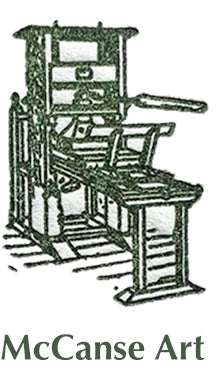Lawrence Arthur Colley Panton
L.A.C. Panton (1894-1954), RCA, OSA, CPE. Lawrence Arthur Colley Panton, known professionally as L.A.C. Panton and as Alec to friends, was born in Egremont, England. He studied art in Sheffield, England as a boy. In 1911, at 17 years old, his father died and he immigrated to Canada with his mother. He and his mother settled in Toronto, where Panton spent his first few years working at the Grant Trunk Railway as an office assistant, and then as a bookkeeper at the Evening Telegram. After serving in the first World War between 1916 and 1919, Panton continued his studies at the Ontario College of Art (now OCAD) under Charles M. Manly and Frederick Challener, alongside classes at the Central Technical School.
Upon finishing his studies in 1922, Panton was hired as a designer at Rous and Mann, a Toronto-based printing firm, where he worked alongside Frederick Varley as well as A.J. Casson. In the same year, Panton first exhibited with the Ontario Society of Artists (OSA). Then, in 1924, he exhibited with the British Empire Exhibition in Wembley, England. That year, Panton chose to leave commercial design, and would spend his remaining professional life teaching at the Central Technical School, Western Technical School, and Northern Vocational School, later becoming president of the Ontario College of Art in 1951.

Panton was a lively member of Canadian art societies. In 1925, he became a member of the OSA and co-founded the Canadian Society of Painters in Water Colour (CSPWC). Between 1931 and 1938, he was president of the OSA. He began exhibiting with the Royal Canadian Academy of Arts (RCA) in 1927, becoming a member in 1943. He was also affiliated with the Canadian Society of Painter-Etchers and Engravers, the Canadian Society of Graphic Art, the Canadian Group of Painters, and the Arts and Letters Club. Panton regularly exhibited at the Toronto Art Gallery, and also participated in major international exhibitions, such as the 1937 Coronation Exhibition in London, the New York World’s Fair in 1939, and the UNESCO 1946 exhibition.
Fellow painter Walter Philips, speaking of Panton’s work, described it as “logical as well as beautiful.” Panton was seen as a progressive conservative, paying homage to the past while embracing modernity, a stance that was seen as controversial by some of his peers; indeed, Panton might have made waves during his term as president of the OSA, when the debate between modernity and conservatism in Canadian art was particularly incensed.
After the peak of his success in the late 1940s, Panton took a sharp turn towards the abstraction, which is attributed to his 1950 sabbatical spent studying under William Palmer in New York. In 1954, Panton died of a heart attack in Toronto. His work is represented in many collections, including that of the Art Gallery of Ontario and the National Gallery of Canada.
Sources:
“AGO Presents Art of L.A.C. Panton in Summer Exhibition.” Art Gallery of Ontario, 3 July 1990.
Boyanoski, Christine. Towards a Lyrical Abstraction: The Art of L.A.C. Panton. Art Gallery of Toronto, 1990. Print.
Brigden, H. J. L.A.C. Panton. Art Gallery of Toronto, 1955.
Burtch, Michael. “Panton Made His Presence Felt.” Sault Ste. Marie Star, 9 April 1983.
“Famed Artist L.A.C. Panton Dies at 60.” The Ottawa Citizen, 23 November 1954.
“Man on Street is Art ‘Dabbler.’” Vancouver News Herald, 15 March 1948.
McCarthy, Pearl. “Panton Show Proves Worthiness.” The Globe and Mail, 1 February 1958.
